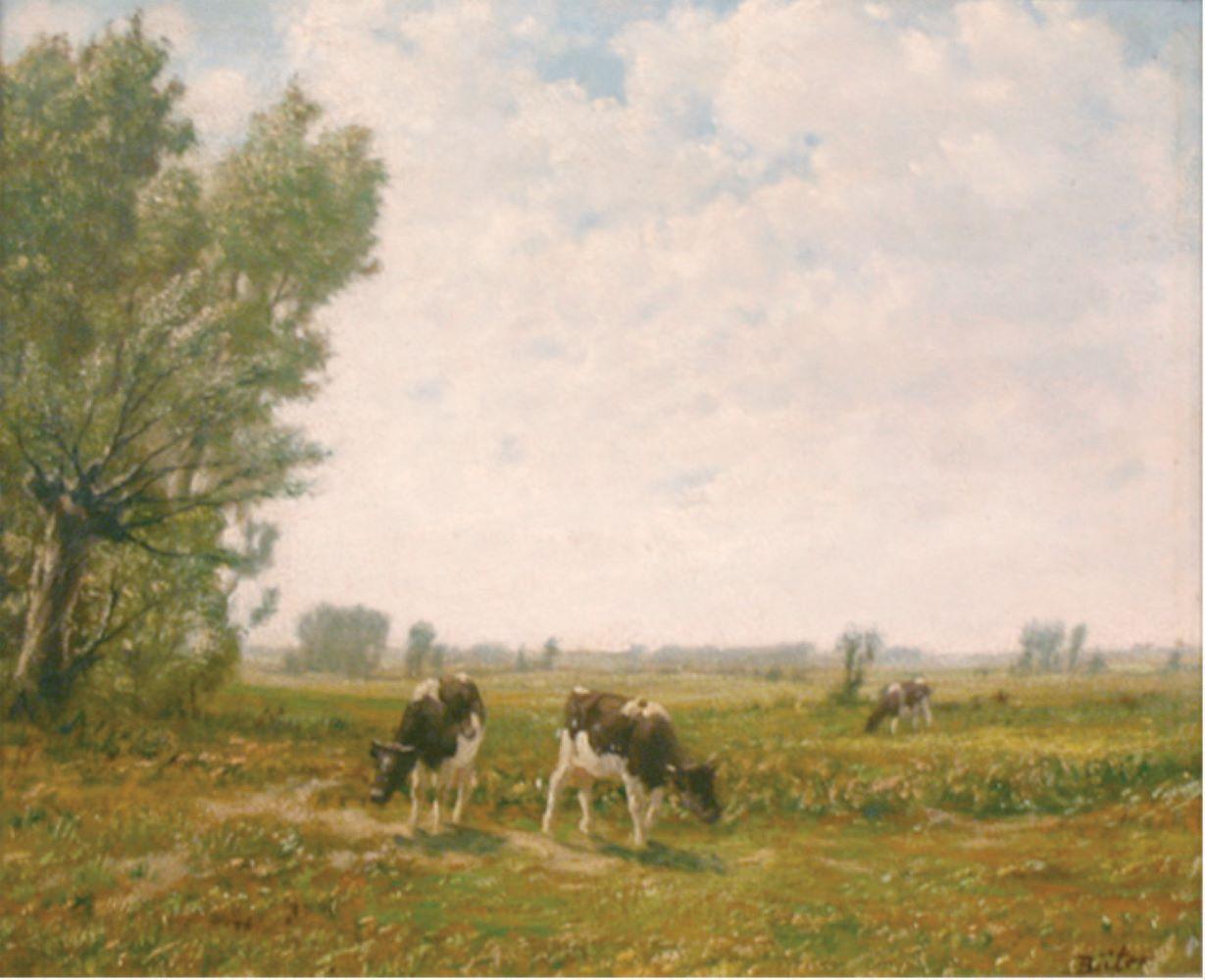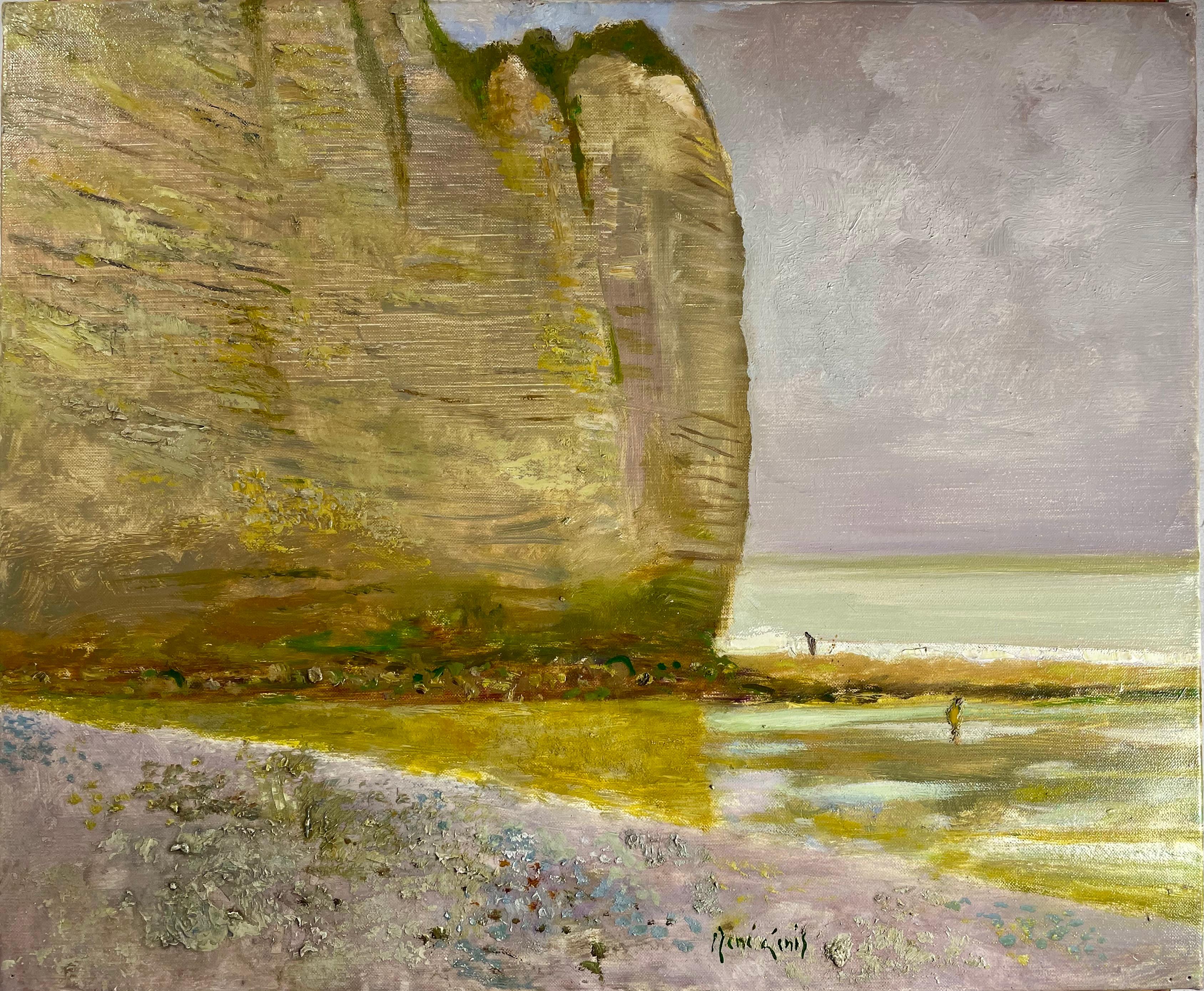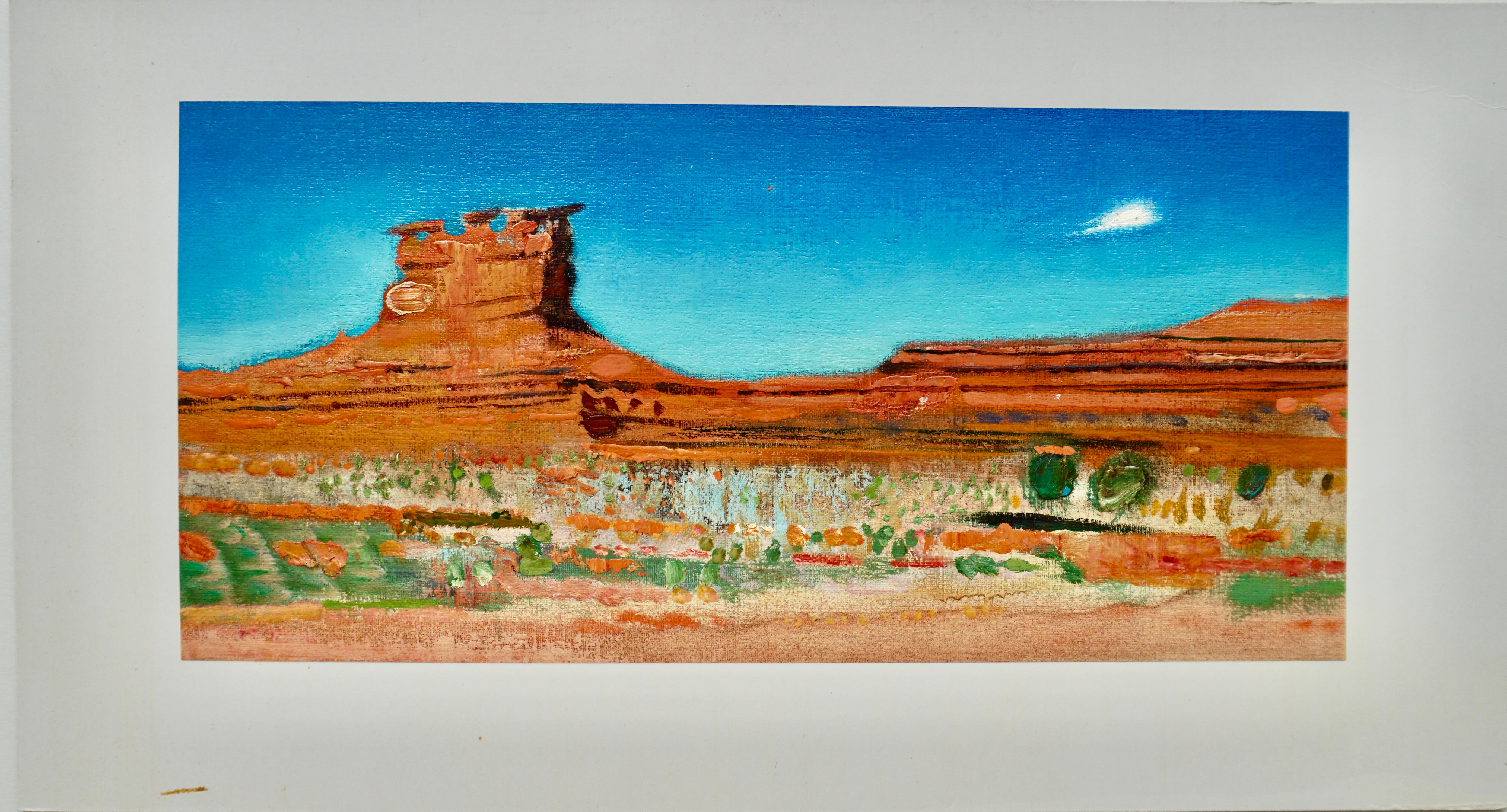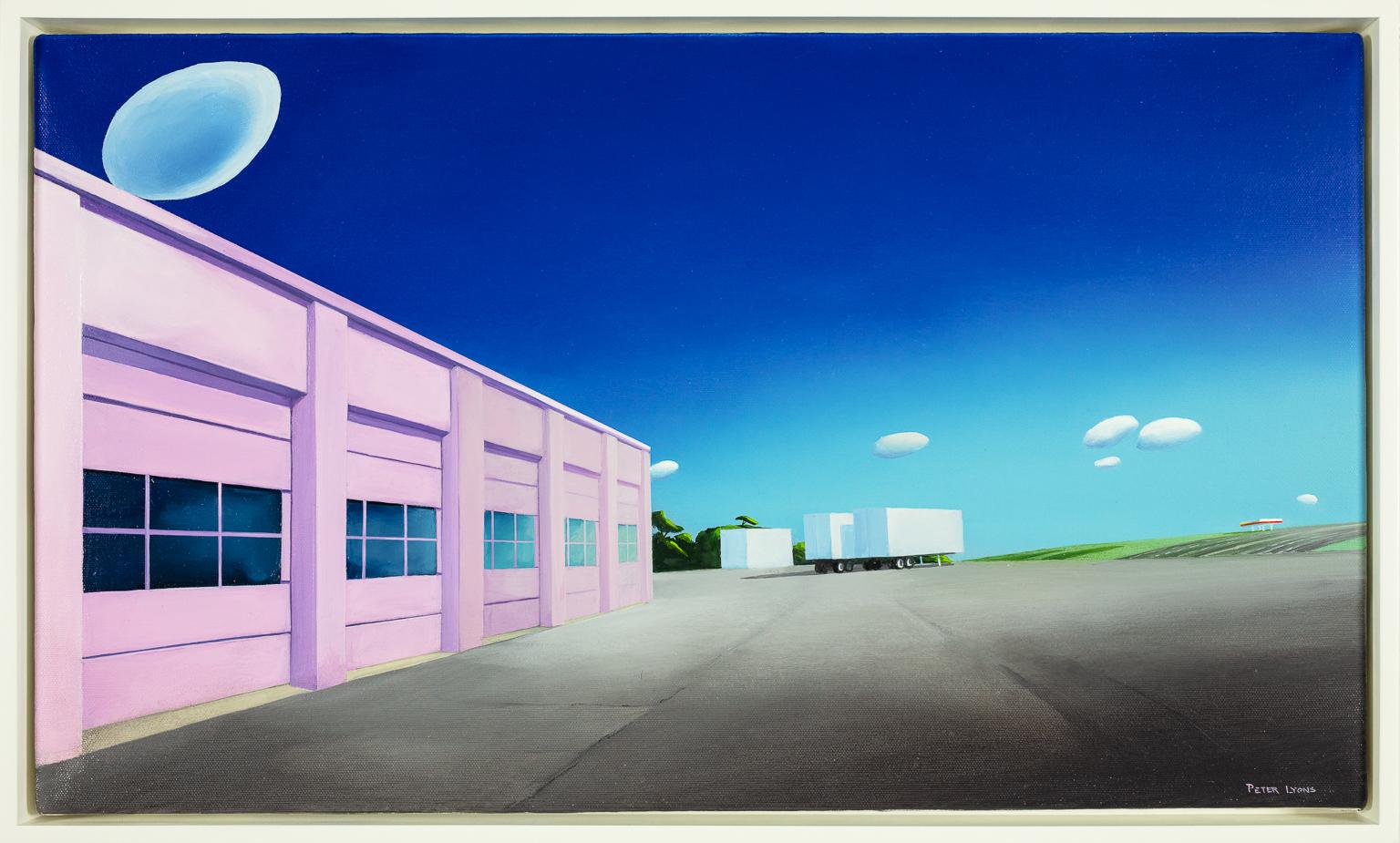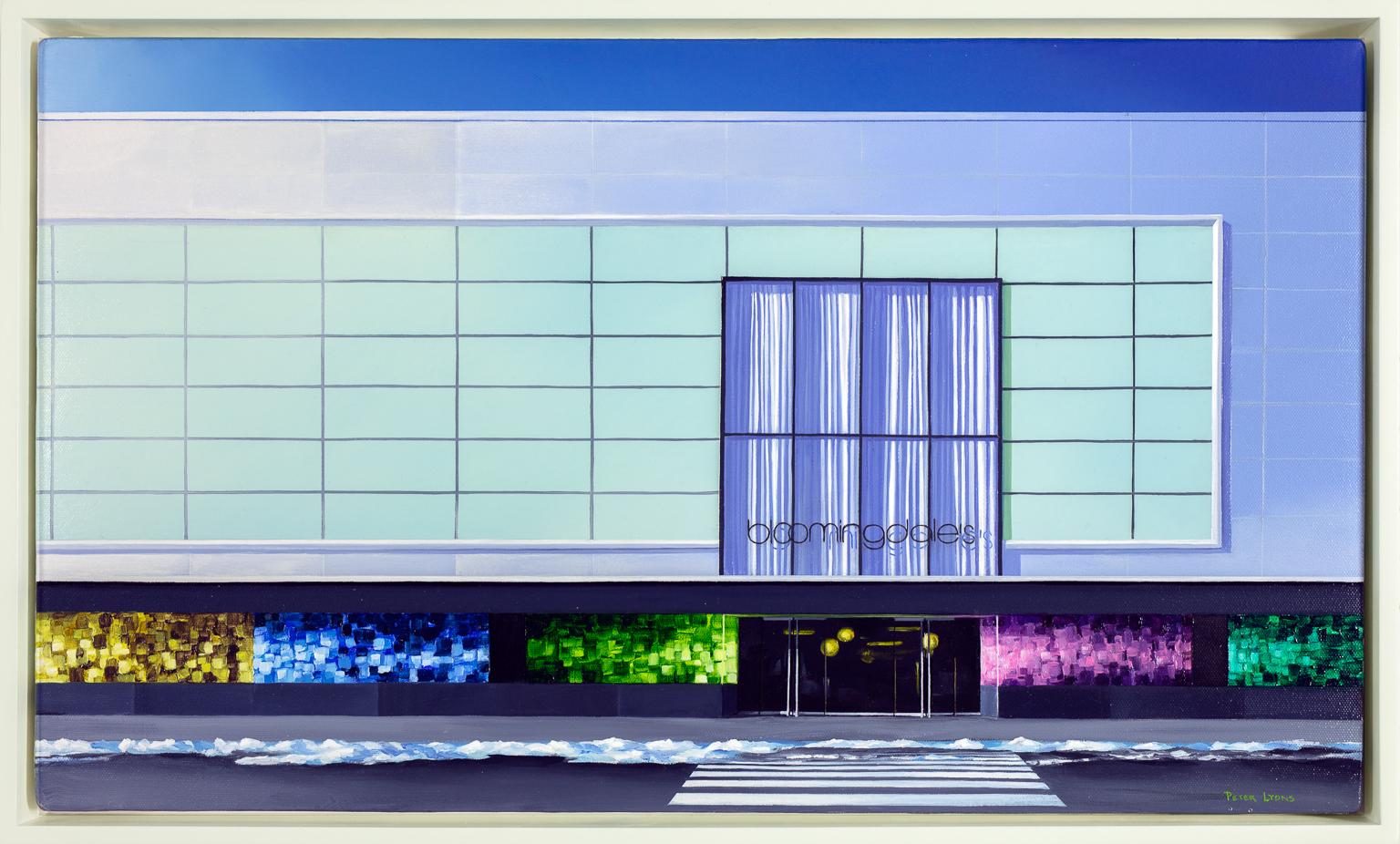Items Similar to English Figurative Landscape Painting oil on canvas 19th century
Want more images or videos?
Request additional images or videos from the seller
1 of 10
Edward WilliamsEnglish Figurative Landscape Painting oil on canvas 19th century1834
1834
About the Item
Edward Williams, born in London in the 1781, was an English landscape painter during the Victorian era. He had six sons, who became well-known landscape painters as well. He came from a family of artist: his mother, Mary Ward, was the sister of the animal painter James Ward and of the engraver William Ward, but alsothe sister-in-law of the figure-painter George Morland, and of the animal painter Henry Chalon; his father was an engraver who worked with John Raphael Smith.
Edward Williams, junior was sent around 1792 or 1793 to live with his maternal uncle James Ward, R.A. (1769–1859), but it seems unlikely that he received any painting instruction from him. Instead he was informally apprenticed to a carver and gilder named Thomas Hillier, who had a shop on Carnaby Street and he became quite successful to enjoy a comfortable living.
Edward Williams between 1814 and 1855 exhibited at the Royal Academy (36 works), the British Institution (21 works), the Suffolk Street Gallery of the Society of British Artists (38 works), and elsewhere.
He started by painting miniatures, and copying Baroque landscapes from the 1600s in the style of the Dutch painters Ruisdael (1628-1682) and Hobbema (1638-1709) - the former known for woodland scenes with detailed renderings of trees, particularly the leaves, and water scenes with small boats moored beneath windmills; the latter known for his densely folliated trees with stippled leaves.
As Edward Williams developed his own style, in which the figures, if present at all, were generally subordinate to the scenery, he moved on to contemporary landscapes of the English countryside that, not surprisingly, hint of some of the work of his uncle George Morland. He rarely signed his work, perhaps but one painting in a hundred, and when he did he signed simply as E.Wms.
- Creator:Edward Williams (1782 - 1855, English)
- Creation Year:1834
- Dimensions:Height: 35.83 in (91 cm)Width: 28.35 in (72 cm)
- Medium:
- Period:
- Condition:
- Gallery Location:Florence, IT
- Reference Number:1stDibs: LU124027313962
About the Seller
5.0
Vetted Seller
These experienced sellers undergo a comprehensive evaluation by our team of in-house experts.
Established in 1958
1stDibs seller since 2019
23 sales on 1stDibs
Typical response time: <1 hour
- ShippingRetrieving quote...Ships From: Florence, Italy
- Return PolicyA return for this item may be initiated within 2 days of delivery.
More From This SellerView All
- Tuscan Animal Landscape Figurative painting 20th century oil on canvasLocated in Florence, ITThe artist of this painting is unknown but it can be ascribe to a Tuscan movement of the 20th century inspired by 19th century art like Verismo (as we can deduce by the clean and not...Category
20th Century Folk Art Animal Paintings
MaterialsCanvas, Oil
- Florentine Signed Gordigiani Portrait Landscape Painting 19th century oil canvasBy Michele GordigianiLocated in Florence, ITThe scene is set in a luxuriant and blossoming garden-on which we can see a pergola vine training and an ionic column-outlined with fast and wide brush strokes of faint and pastel colours. In some parts of the background is revealed the preparatory layer, because it’s unfinished, but we can presume the presence of a light blue sky with some clouds, deducing it from a confrontation with the left side, where the sky was started. In the foreground a boy dressed up with a style reminding medieval echoes looks like observing a flower or a small animal that he’s holding, as the position of the fingers-that seems caressing something-make suppose. It's signed on the right side: MG. (Michele Gordigiani). The physiognomy, the expression and the hairstyle recall Edoardo Gordigiani...Category
1890s Impressionist Portrait Paintings
MaterialsCanvas, Oil
- Tuscan Figurative Genre Scene painting 20th century oil on canvasLocated in Florence, ITThe artist of this painting is unknown but it can be ascribe to a Tuscan movement of the 20th century inspired by 19th century art like Verismo (as we can deduce by the clean and not...Category
20th Century Folk Art Figurative Paintings
MaterialsCanvas, Oil
- Tuscan Figurative Genre Scene painting 20th century oil on canvasLocated in Florence, ITThe artist of this painting is unknown but it can be ascribe to a Tuscan movement of the 20th century inspired by 19th century art like Verismo (as we can deduce by the clean and not...Category
20th Century Folk Art Figurative Paintings
MaterialsCanvas, Oil
- Figurative mythological painting Emilian school of the eighteenth century oil on canvasLocated in Florence, ITMythological-themed painting (unframed 35.5 x 28 cm) depicting the episode of Diana and Actaeon from Ovid's Metamorphoses. The goddess is depicted sitting in discreet attire, the bow...Category
1780s Rococo Landscape Paintings
MaterialsCanvas, Oil
- Rococo painting with frame by 18th-century Venetian school oil on canvasLocated in Florence, ITThe painting (with a Salvador Rosa-style gilded frame 88 x 116 cm) depicts a group of four children who are playing outside on a swinging seesaw; we are probably dealing with a prank, as can be seen by the satisfied expression of the child on the right at the expense of the one in the foreground, who seems to be supported by the others, perhaps because of the fear felt. They are dressed in the same way, with black or brown ankle boots and a kind of double-breasted jumpsuit with a rich lace collar reminiscent of the jabots of dames, blue for the one in the foreground, brick-colored for the other three. Children also look alike in the hair, typical of the period, and features, suggesting a kinship relationship. We find the same subject, for example, in Johann Zoffany...Category
18th Century Rococo Portrait Paintings
MaterialsCanvas, Oil
You May Also Like
- Bernhard ButerLocated in Saint Augustine, FLArtist: Bernhard Buter (1883-1959) German Title: Rhinish Landscape Medium: Oil on Canvas Dimensions: Framed 19” x 21” , Unframed 11 x 13” Bernhard Buter paints agrarian landscapes i...Category
Early 20th Century Realist Landscape Paintings
MaterialsCanvas, Oil
- "Les Falaise Normande" (The Cliffs Of Normand)By René GenisLocated in Berlin, MDRene Genis (French 1922-2004) “Les Falaise Normande” / The Cliffs of Normand. A sea scape with high cliffs, the beach, and two fishermen. The cliffs are in browns, tans and olives a...Category
1990s French School Landscape Paintings
MaterialsCanvas, Oil
- "Monument Valley"By René GenisLocated in Berlin, MDRene Genis (French 1922-2004) Monument Valley. 1967. Beautiful oranges, browns, greens against a turquoise blue sky. Oil on canvas, laid on mat. Si...Category
Mid-20th Century Landscape Paintings
MaterialsOil, Canvas
- Early oil depicting the Great Fire of LondonLocated in London, GBThe Great Fire of London in September 1666 was one of the greatest disasters in the city’s history. The City, with its wooden houses crowded together in narrow streets, was a natural fire risk, and predictions that London would burn down became a shocking reality. The fire began in a bakery in Pudding Lane, an area near the Thames teeming with warehouses and shops full of flammable materials, such as timber, oil, coal, pitch and turpentine. Inevitably the fire spread rapidly from this area into the City. Our painting depicts the impact of the fire on those who were caught in it and creates a very dramatic impression of what the fire was like. Closer inspection reveals a scene of chaos and panic with people running out of the gates. It shows Cripplegate in the north of the City, with St Giles without Cripplegate to its left, in flames (on the site of the present day Barbican). The painting probably represents the fire on the night of Tuesday 4 September, when four-fifths of the City was burning at once, including St Paul's Cathedral. Old St Paul’s can be seen to the right of the canvas, the medieval church with its thick stone walls, was considered a place of safety, but the building was covered in wooden scaffolding as it was in the midst of being restored by the then little known architect, Christopher Wren and caught fire. Our painting seems to depict a specific moment on the Tuesday night when the lead on St Paul’s caught fire and, as the diarist John Evelyn described: ‘the stones of Paul’s flew like grenades, the melting lead running down the streets in a stream and the very pavements glowing with the firey redness, so as no horse, nor man, was able to tread on them.’ Although the loss of life was minimal, some accounts record only sixteen perished, the magnitude of the property loss was shocking – some four hundred and thirty acres, about eighty per cent of the City proper was destroyed, including over thirteen thousand houses, eighty-nine churches, and fifty-two Guild Halls. Thousands were homeless and financially ruined. The Great Fire, and the subsequent fire of 1676, which destroyed over six hundred houses south of the Thames, changed the appearance of London forever. The one constructive outcome of the Great Fire was that the plague, which had devastated the population of London since 1665, diminished greatly, due to the mass death of the plague-carrying rats in the blaze. The fire was widely reported in eyewitness accounts, newspapers, letters and diaries. Samuel Pepys recorded climbing the steeple of Barking Church from which he viewed the destroyed City: ‘the saddest sight of desolation that I ever saw.’ There was an official enquiry into the causes of the fire, petitions to the King and Lord Mayor to rebuild, new legislation and building Acts. Naturally, the fire became a dramatic and extremely popular subject for painters and engravers. A group of works relatively closely related to the present picture have been traditionally ascribed to Jan Griffier...Category
17th Century Old Masters Landscape Paintings
MaterialsOil, Canvas
- Flat Ledge Quarry with Golden TreesLocated in Gloucester, MAFlat Ledge Quarry is one of the many granite quarries in Rockport MA, which actively produced granite for cobblestones until the early 20th century, when asphault became the preferre...Category
2010s Contemporary Landscape Paintings
MaterialsCanvas, Oil
- ThresholdLocated in Gloucester, MAPeter Lyons’s technique approaches photographic realism, but the precision in his paintings is an attempt to communicate a state of awareness, rather than ...Category
2010s Contemporary Landscape Paintings
MaterialsOil, Canvas
Recently Viewed
View AllMore Ways To Browse
Antique Art Shop
Small 19th Century Paintings
Antique Law
Antique Latter
British Shop
Shop Sign 19th Century
Antique Suffolk
Antique Miniature Painting Paintings
Antique Miniature Paintings Paintings
R Thomas
19th Century Carvers
English Antique Shop
English Antique Shops
John Law
R Holland
James Dutch
Williams Antique
Antique Shopping London
